


A coffeehouse, coffee shop or café (sometimes spelt cafe) is an establishment which primarily serves hot coffee, related coffee beverages (café latte, cappuccino, espresso), tea, and other hot beverages. Some coffeehouses also serve cold beverages such as iced coffee and iced tea. Many cafés also serve some type of food, such as light snacks, muffins or pastries. Coffeehouses range from owner-operated small businesses to large multinational corporations.
In continental Europe, cafés often serve alcoholic beverages and light food, but elsewhere the term "café" may also refer to a tea room, "greasy spoon" (a small and inexpensive restaurant, colloquially called a "caff"), transport café, or other casual eating and drinking place. A coffeehouse may share some of the same characteristics of a bar or restaurant, but it is different from a cafeteria. Many coffeehouses in the Middle East and in West Asian immigrant districts in the Western world offer shisha (nargile in Greek and Turkish), flavored tobacco smoked through a hookah. Espresso bars are a type of coffeehouse that specializes in serving espresso and espresso-based drinks.
From a cultural standpoint, coffeehouses largely serve as centers of social interaction: the coffeehouse provides patrons with a place to congregate, talk, read, write, entertain one another, or pass the time, whether individually or in small groups. Since the development of Wi-Fi, coffeehouses with this capability have also become places for patrons to access the Internet on their laptops and tablet computers. A coffeehouse can serve as an informal club for its regular members. As early as the 1950s Beatnik era and the 1960s folk music scene, coffeehouses have hosted singer-songwriter performances, typically in the evening.
Contents
Etymology
The most common English spelling, café, is the French, Portuguese, and Spanish spelling, and was adopted by English-speaking countries in the late-19th century. As English generally makes little use of diacritics, anglicisation tends to omit them and to place the onus on the readers to remember how it is pronounced without the presence of the accent. Thus the spelling cafe has become very common in English-language usage throughout the world, especially for the less formal, i.e., "greasy spoon" variety (although orthographic prescriptivists often disapprove of it). The Italian spelling, caffè, is also sometimes used in English. In southern England, especially around London in the 1950s, the French pronunciation was often facetiously altered to /kæf/ and spelt caff.
The English words coffee and café derive from the Italian word for coffee, caffè—first attested as caveé in Venice in 1570—and in turn derived from Arabic qahwa (????). The Arabic term qahwa originally referred to a type of wine, but after the wine ban by Islam, the name was transferred to coffee because of the similar rousing effect it induced. European knowledge of coffee (the plant, its seeds, and the beverage made from the seeds) came through European contact with Turkey, likely via Venetian-Ottoman trade relations.
The English word café to describe a restaurant that usually serves coffee and snacks rather than the word coffee that describes the drink, is derived from the French café. The first café is believed to have opened in France in 1660.
The translingual word root /kafe/ appears in many European languages with various naturalized spellings, including; Portuguese, Spanish, and French (café); German (Kaffee); Polish (kawa); Ukrainian (????, 'kava'); and others.
History
Coffeehouses in Mecca became a concern of imams who viewed them as places for political gatherings and drinking. They were banned for Muslims between 1512 and 1524. In 1530, the first coffeehouse was opened in Damascus and not long after there were many coffeehouses in Cairo.
The Ottoman chronicler ?brahim Peçevi reports in his writings (1642–49) about the opening of the first coffeehouse in Istanbul:
Until the year 962 , in the High, God-Guarded city of Constantinople, as well as in Ottoman lands generally, coffee and coffee-houses did not exist. About that year, a fellow called Hakam from Aleppo and a wag called Shams from Damascus came to the city; they each opened a large shop in the district called Tahtakale, and began to purvey coffee.
Various legends involving the introduction of coffee to Istanbul at a "Kiva Han" in the late-15th century circulate in culinary tradition, but with no documentation.
The 17th century French traveler and writer Jean Chardin gave a lively description of the Persian coffeehouse scene:
People engage in conversation, for it is there that news is communicated and where those interested in politics criticize the government in all freedom and without being fearful, since the government does not heed what the people say. Innocent games ... resembling checkers, hopscotch, and chess, are played. In addition, mollas, dervishes, and poets take turns telling stories in verse or in prose. The narrations by the mollas and the dervishes are moral lessons, like our sermons, but it is not considered scandalous not to pay attention to them. No one is forced to give up his game or his conversation because of it. A molla will stand up in the middle, or at one end of the qahveh-khaneh, and begin to preach in a loud voice, or a dervish enters all of a sudden, and chastises the assembled on the vanity of the world and its material goods. It often happens that two or three people talk at the same time, one on one side, the other on the opposite, and sometimes one will be a preacher and the other a storyteller.
Europe
In the 17th century, coffee appeared for the first time in Europe outside the Ottoman Empire, and coffeehouses were established, soon becoming increasingly popular. The first coffeehouses appeared in Venice in 1629, due to the traffic between La Serenissima and the Ottomans; the very first one is recorded in 1645. The first coffeehouse in England was set up in Oxford in 1650 by a Jewish man named Jacob at the Angel in the parish of St Peter in the East. A building on the same site now houses a cafe-bar called The Grand Cafe. Oxford's Queen's Lane Coffee House, established in 1654, is also still in existence today. The first coffeehouse in London was opened in 1652 in St Michael's Alley, Cornhill. The proprietor was Pasqua Rosée, the servant of a trader in Turkish goods named Daniel Edwards, who imported the coffee and assisted Rosée in setting up the establishment in St Michael's Alley, Cornhill.
From 1670 to 1685, the number of London coffee-houses began to multiply, and also began to gain political importance due to their popularity as places of debate. English coffeehouses in the 17th and 18th centuries were significant meeting places, particularly in London. By 1675, there were more than 3,000 coffeehouses in England. Pasqua Rosée also established the first coffeehouse in Paris in 1672 and held a citywide coffee monopoly until Procopio Cutò opened the Café Procope in 1686. This coffeehouse still exists today and was a popular meeting place of the French Enlightenment; Voltaire, Rousseau, and Denis Diderot frequented it, and it is arguably the birthplace of the Encyclopédie, the first modern encyclopedia. In 1667, Kara Hamie, a former Ottoman Janissary from Constantinople, opened the first coffee shop in Bucharest (then the capital of the Principality of Wallachia), in the center of the city, where today sits the main building of the National Bank of Romania. America had its first coffeehouse in Boston, in 1676.
The first cafeteria in Vienna was founded in 1683 by a Ukrainian resident, Jerzy Franciszek Kulczycki, who was also the first to serve coffee with milk. There is a statue of Kulczycki on a street also named after him. However the culture of drinking coffee was itself widespread in the country in the second half of the 18th century. The first registered coffeehouse in Vienna was founded by an Armenian merchant named Johannes Theodat (also known as Johannes Diodato) in 1685.[31] Fifteen years later, four other Armenians owned coffeehouses.[30]
Though Charles II later tried to suppress the London coffeehouses as "places where the disaffected met, and spread scandalous reports concerning the conduct of His Majesty and his Ministers", the public flocked to them. For several decades following the Restoration, the Wits gathered around John Dryden at Will's Coffee House, in Russell Street, Covent Garden.[citation needed] The coffeehouses were great social levelers, open to all men and indifferent to social status, and as a result associated with equality and republicanism. The rich intellectual atmosphere of early London coffeehouses were available to anyone who could pay the sometimes one penny entry fee, giving them the name of 'Penny Universities'.[32]
More generally, coffeehouses became meeting places where business could be carried on, news exchanged and the London Gazette (government announcements) read. Lloyd's of London had its origins in a coffeehouse run by Edward Lloyd, where underwriters of ship insurance met to do business. By 1739, there were 551 coffeehouses in London; each attracted a particular clientele divided by occupation or attitude, such as Tories and Whigs, wits and stockjobbers, merchants and lawyers, booksellers and authors, men of fashion or the "cits" of the old city center. According to one French visitor, Antoine François Prévost, coffeehouses, "where you have the right to read all the papers for and against the government," were the "seats of English liberty."[33]
The banning of women from coffeehouses was not universal, but does appear to have been common in Europe. In Germany, women frequented them, but in England and France they were banned.[34] Émilie du Châtelet purportedly cross-dressed to gain entrance to a coffeehouse in Paris.[35]
In a well-known engraving of a Parisian café c. 1700,[36] the gentlemen hang their hats on pegs and sit at long communal tables strewn with pa
Watch movie Coffee House online on Amazon
Watch movie Coffee House online
Watch The Movie On PrimeBhool Bhulaiyaa Full HD Movie Download
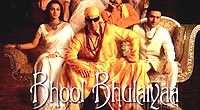
Dil (1990) Full HD Movie Download
.jpg)
Swades Full HD Movie Download
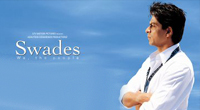
Cheluvina Chiththara Full HD Movie Download
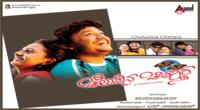
Champion Full HD Movie Download
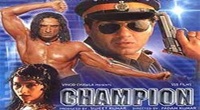
Saggai (1966) Full HD Movie Download
.jpg)
Paying Guest Full HD Movie Download
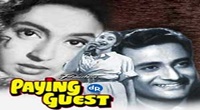
Pyar Ke Rahi Full HD Movie Download

Shob Charitro Kalponik Full HD Movie Download

Anjaane - The Unknown Full HD Movie Download
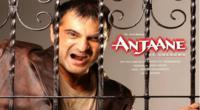
Kaminey Full HD Movie Download

Thank You (2011) Full HD Movie Download
.jpg)
Romeo Full HD Movie Download
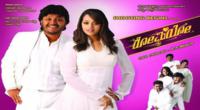
Nai Rat Nai Bat Full HD Movie Download
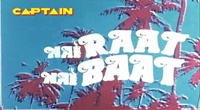
Doragariki Donga Pellam Full HD Movie Download
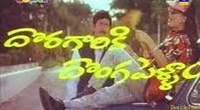
Patli Kamar Lambe Bal Full HD Movie Download
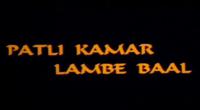
Jai Shree Ganesh Full HD Movie Download
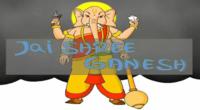
Aalkkoottathil Thaniye Full HD Movie Download

Crime File Full HD Movie Download

Devi Putrudu Full HD Movie Download
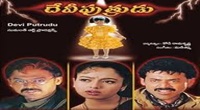
Paalu Neellu Full HD Movie Download
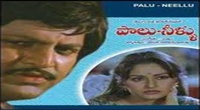
Download latest Movie from bollywood
- 1> baaghi 3
- 2> THE SKY IS PINK MOVIE FULL STORY AND REVIEW
- 3> Luka Chuppi
- 4> TO ALL THE BOYS I’VE LOVED BEFORE
- 5> Kabir Singh
- 6> Street Dancer 3D
- 7> Simmba
- 8> Gone Girl
- 9> The Girl Who Lived
- 10> Ludo
- 11> DILWALE DULHANIA LE JAYENGE
- 12> GUILTY
- 13> The Godfather
- 14> Adventures of Rusty
- 15> Sooryavanshi
- 16> Satyameva Jayate 2
- 17> Thappad
- 18> Bhool Bhulaiyaa 2
- 19> KGFChapter 2
- 20> Mardaani 2
- 21> Pinjar
- 22> Shivaji maharaj
- 23> Ek Villian 2
- 24> Hungama 2
- 25> Divergent
- 26> Mumbai Saga
- 27> The Internship
- 28> HIT (telugu)
- 29> Panga
- 30> The perfect date
- 31> 16 December
- 32> Gopala Gopala (Telugu)
- 33> Brahmastra
- 34> Gangubai Kathiawadi
- 35> Manmadhudu
- 36> Nenu local
- 37> Mahanati
- 38> Shatamanam bavathi
- 39> Lagaan
- 40> After
- 41> MOM
- 42> Shamshera
- 43> Raguvaran BTech
- 44> Khakee
- 45> The villain
- 46> OM
- 47> Mr. perfect
- 48> Bueatifull mind
- 49> Hichki
- 50> Gabbar Singh
- 51> Jogi
- 52> Before Sunrise
- 53> Before Sunset
- 54> Before Midnight
- 55> The Big Bull
- 56> Top Gun: Maverick
- 57> The Purge
- 58> The Sky is Pink
- 59> Laxmmi Bomb
- 60> Sadak 2
- 61> Sufna
- 62> Prithviraj
- 63> PK
- 64> Coolie No 1(2020)
- 65> Black Widow
- 66> Dear Zindagi
- 67> Dil Bechara
- 68> PHIR HERA PHERI
- 69> WAR
- 70> Dostana
- 71> RRR: Roudram Ranam Rudhiram
- 72> Maidan
- 73> Dabbang 3
- 74> Chhalaang
- 75> life as we know it
- 76> SherShaah
- 77> Sandeep Aur Pinky Faraar
- 78> Event Horizon
- 79> 83
- 80> Radhe: Your Most Wanted Bhai
- 81> Gunjan Saxena: The Kargil Girl
- 82> Mr India
- 83> Vivah
- 84> Anokha Bandhan
- 85> Ghost
- 86> Bhoot: Part One - The Haunted Ship
- 87> Haseen Dilruba
- 88> Laal Singh Chaddha
- 89> Qismat
- 90> Rajput
- 91> Drive
- 92> Dil Chahta Hai
- 93> Dil Ki Baazi
- 94> Dil Ka Rishta
- 95> Teesri Manzil
- 96> Dil
- 97> Love Aaj Kal
- 98> Khaali Peeli
- 99> Bunty Aur Babli 2
- 100> Atrangi Re
- 101> Gulabo Sitabo
- 102> Jodi
- 103> Suraj Pe Mangal Bhari
- 104> Deewana
- 105> Attack
- 106> Sardar Udham Singh
- 107> Toofan
- 108> THE LOVEBIRDS
- 109> Jersey
- 110> Ginny Weds Sunny
- 111> Thalaivi
- 112> Shiddat
- 113> Angels vs Zombies
- 114> Koi Mil Gya
- 115> Thank God
- 116> Bhuj: The Pride of India
- 117> Hum Aapke Hain Kaun
- 118> The Platform
- 119> Bird Box
- 120> Roohi Afzana
- 121> Torbaaz
- 122> Nikamma
- 123> World War Z
- 124> Extraction
- 125> Train to Busan
- 126> Life of Pi
- 127> SHAADI MEIN JROOR AANA
- 128> Himmat Aur Mehnat
- 129> To All The Boys: P.S. I Still Love You
- 130> Mimi
- 131> Good Newwz
- 132> Shubh Mangal Zyada Saavdhan
- 133> Raabta
- 134> Harry Potter and the Philosopher's Stone
- 135> Harry Potter and the Chamber of Secrets
- 136> Chhapaak
- 137> War of the Worlds
- 138> Harry Potter and the Prisoner of Azkaban
- 139> Harry Potter and the Goblet of Fire
- 140> MURDER MYSTERY
- 141> Shakuntala Devi
- 142> Bachchan Pandey
- 143> Jayeshbhai Jordar
- 144> Sheer Qorma
- 145> Saina
- 146> 'O' Pushpa I hate tears
- 147> Kedarnath
- 148> MS Dhoni The Untold Story
- 149> Chhichhore
- 150> Badhaai Ho
- 151> Unstoppable
- 152> Oz the Great And Powerful
- 153> The Girl on the Train
- 154> Haathi Mere Saathi 2020
- 155> The Conjuring: The Devil Made Me Do It
- 156> Gandhi Se Pehle Gandhi
- 157> The Song of Scorpions
- 158> Srimanthudu
- 159> Hello Guru Prema Kosame
- 160> Beauty and The Beast
- 161> Black Panther
- 162> Charlie and the Chocolate Factory
- 163> Bole Chudiyan
- 164> Fidaa
- 165> Duvvada Jagannadham
- 166> Bruce Lee: The Fighter
- 167> Hyper
- 168> Yaara
- 169> Red (2020)
- 170> Shivam
- 171> That Is Mahalakshmi
- 172> Nishabdham
- 173> Aashram 2020 web series
- 174> Laxmii
- 175> Mismatched
- 176> STUDENT OF THE YEAR 2
- 177> NAIL POLISH
- 178> Ramprasad Ki Tehrvi
- 179> KAAGAZ
- 180> 12 o Clock
- 181> The Power
- 182> bolo hau
- 183> Tribhanga
- 184> JAMUN
- 185> Madam Chief Minister
- 186> Maasaab
- 187> Aadhaar
- 188> Tanhaji
- 189> Bhaagi 3
- 190> Bhootnath
- 191> MALANG
- 192> Jai Mummy Di
- 193> Haathi Mere Saathi 2021
- 194> Shakeela
- 195> Unpaused
- 196> Annayya
- 197> Vamsoddharakudu
- 198> Mrugaraju
- 199> Narasimha Naidu
- 200> Sankranti
- 201> Manasu Maata Vinadhu
- 202> Anjaane
- 203> Apaharan
- 204> Bachke Rehna Re Baba
- 205> Bewafaa
- 206> Roohi
- 207> Radhe
- 208> Zindagi Khoobsoorat Hai
- 209> Yeh Mohabbat Hai
- 210> Yeh Kya Ho Raha Hai?
- 211> The Tomorrow War
- 212> DehradunDiary
- 213> Meri Shaadi Karaoo
- 214> Matruu Ki Bijlee Ka Mandola
- 215> No One Killed Jesica
- 216> Aag Ka Goola
- 217> Eight Million Dollars
- 218> Three Hundred
- 219> Cats and Dog
- 220> Decoy
- 221> Gold Rush
- 222> You Have Got Mail
- 223> Final Destination three
- 224> Tofan
- 225> Jungle
